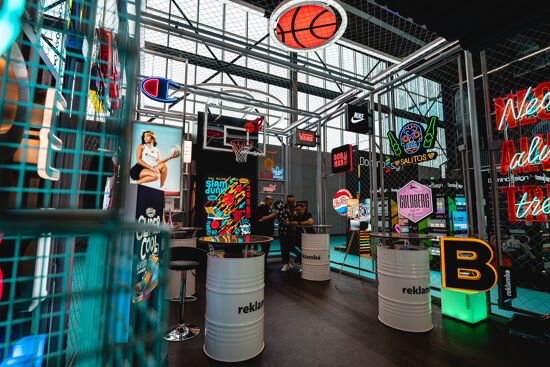9 lean manufacturing principles for Garment Decorators
.png?width=750)
Marshall Atkinson share various lean manufacturing principles to help streamline operations, reduce waste increase productivity and lower your business's costs.
Here’s a question: Do you want to streamline operations, reduce waste, increase productivity, and lower costs?
Of course you do.
Welcome to the incredible tenets of lean manufacturing. Originally developed to streamline massive automobile production lines, lean manufacturing principles are equally applicable and transformative in the garment decoration industry.
So, whether your day involves screen printing, digital printing, sublimating, embroidering, or applying heat transfers…or maybe all of these—lean manufacturing ideas can help transform your business and improve efficiency and productivity.
What is Lean Manufacturing?
Lean manufacturing is a methodology designed to promote flow efficiency and minimize waste within any production system. While garment decorators usually don’t consider themselves “manufacturers,” this is exactly what you are.
Manufacturing involves taking something, altering it, and producing something at the end of the process. This could be a widget, an automobile car door, a piece of office furniture…or a decorated garment.
The core concepts of lean manufacturing can be applied to the garment decoration business. The main goal is to enhance productivity by identifying and eliminating non-value-added activities, which can save you time and money.
Key Lean Concepts Explained Simply:
- Kaizen (Continuous Improvement) is the philosophy of always looking for improvement. In Lean, a “Kaizen Event” is gathering your team to review the work, processes, and actions and suggest a series of small improvements in how you organize your work or manage orders.
- 5S (Sort, Set in Order, Shine, Standardize, Sustain) is an organizational system that helps keep your workplace orderly and your processes smooth. You can’t do good work if your shop is a mess. Implementing 5S an help reduce the time spent searching for tools or materials, which speeds up the entire production process.
- Kanban (Visual Signaling) - this is the idea to help manage your processes by using visual signals (like cards or bins) to indicate when it is time to reorder, restock, or take action. This helps push production and speeds up the process by making it easier to know what to do next.
- Poka-Yoke - this is all about avoiding mistakes. Are you keeping track of your errors? This is in every facet of your business. When you start looking at these and developing ways to avoid mistakes, you dramatically increase efficiency.
- Andon - is a visual aid that signals an action is required. For example, in your shop, a worker could turn on a flashing light to signal something needs to be approved or they need help.
- Jidoka - this principle allows employees to halt the production process if they detect an issue. This proactive approach to quality control ensures any problem is addressed immediately.
- Just-In-Time - this is the “pull” method of manufacturing instead of “push.” With this method, only items needed are worked on instead of making extra that doesn’t serve a purpose.
- Go to Genba. This means that to understand something, you need to see it for yourself. You go where the work is being performed. Leadership often makes decisions from the front office, not where the action is being performed.
- Muda means waste. The purpose of lean is to eliminate waste, and this methodology is focused on seven types of waste: transportation, inventory, motion, waiting, over-processing, over-production, and defects.
Where to Start with Lean
Good for you if you want to start using these ideas in your shop! However, know that this is a continuous process, and you won’t be able to do everything at once. It’s easy to get overexcited and want to tackle too many projects.
Identify Waste
The first step is to identify waste. This applies to all facets of your business, not just production. Your mission here is to notice where bottlenecks occur or resources are wasted. Do you have staff members waiting on something? See if you can identify the root cause of any delay. By the way, this can be the lack of information in many cases.
Discussing this concept with your staff is a simple way to identify waste. Ask them, “What’s broken?” or “What can we improve to make your job easier?” Trust me, they know and have opinions.
Simplify
The next step is to start the 5S process, which will help you systematically organize your workspace. Start by sorting through tools and materials, keeping only what’s necessary. Yes, that means decluttering your business. Then, set everything in order, clean your space, and create standards for maintaining the new organized way of working.
Truthfully, this may be the hardest part of lean. This is a messy industry by nature, and keeping the workspace clean and tidy can be difficult. More than anything, this is a leadership challenge.
Improve Continuously
This idea concerns your business culture. You want to foster an environment where every employee feels responsible for suggesting improvements and implementing ideas.
This could be as simple as adding extensions to the table legs so the table height is more comfortable and ergonomic for a staff member to use daily.
Improvements don’t have to be huge projects. Start with simple ideas that help staff members work better. Tiny improvements, implemented continuously, stack up to major gains by the end of the year.
Process Mapping
One tool that will make a major difference with your lean project will be to map your workflow. Spend time documenting every step of the process for each function in your shop. From start to finish, how does the work happen?
- Who is doing the work?
- Where are they doing the work?
- How long should each step of the work take?
- For the work to happen, what inputs or other departments influence the work? Can this cause delays?
- How is the work scheduled?
-
Do the workers know what to do next without being told?
The simple way to visualize this is to make a step-by-step visual document. Write down a word or short phrase describing the action for each step. Use arrows to show the direction of the process and dependent actions from other departments. For example, purchasing can’t order inventory for a job until the information is in the system.
Implementation
The easy part of lean can be deciding what to do. The hard part is actually making the improvements and changes.
After all, how many projects have you started in your company and haven’t completed? I’ll bet there is a bunch.
Some tips for successful implementation:
- Start small. Try to have many easy wins. Straightening up and sorting one small area of the shop will be easier than the entire facility.
- Involve your staff. Best practices have lean as a bottom-up instead of a top-down movement. Your crew knows what is in the way of them working better. What do they need? Help them.
- Measure. There is a saying, “What gets measured gets improved.” With lean, try to quantify your process. How many? How long does it take? Establish a benchmark and work to improve your numbers. Everything should have a number.
- Create standards. What is the established norm for how something should be handled? Establish the “company way” to do something, and not “Susan’s way” (or whatever their name is) for doing something. Process mapping and benchmarking are keys to this.
- Permit yourself to fail. Not everything will work 100% of the time. It’s ok. Failing is learning. If you are not making mistakes, you are not trying. Sometimes, it takes a few attempts to work out how to do something better. Perfection is an illusion. Keep pushing for better results.
- Don’t let the Japanese vocabulary terms throw you. It is the concepts that matter.
Next Steps
Adopting lean is not about one-time changes. It is about creating a mind-shift of ongoing improvements. Remember, it never ends.
Keep analyzing each process for waste, and encourage your crew to take proactive steps to improve their work. Celebrate successes and even failures!
If you can, make the effort fun.
Start small. Choose one lean practice, such as 5S, and get it going in your business. Keep track of your progress, and expand the program gradually.
Every small step you take is a move toward a more efficient and profitable business.
Why not start today?
Interested in joining our community?
Enquire today about joining your local FESPA Association or FESPA Direct
Recent news
.png?width=550)
Why you should exhibit at European Sign Expo 2025!
European Sign Expo stands out as Europe's leading trade fair catering to speciality signage, digital signage and visual communications industry.
.png?width=550)
Why you should exhibit at FESPA 2025!
FESPA Global Print Expo stands out as Europe's leading trade fair catering to the speciality print sector, screen printing, digital imaging, textile printing and decoration, interior decoration, packaging, and industrial printing.

The evolution of digital printing and sportswear
Digital printing is a crucial aspect of the production of sportswear. Sonja Angerer shares the importance for printers to be aware of the latest trends in digital printing and sportswear. In the last few years, there has been a true evolution in sportswear.

The top 5 most popular types of non-printed signage
The European Sign Expo 2024 that took place in March in Amsterdam has demonstrated once again, the popularity of non-printed signage. Today, there are numerous types of non-printed signage avaialble that feature suitable technology for every purpose. Sonja Angerer shares a few of the most popular and used types of non-printed signage.